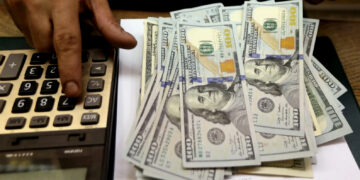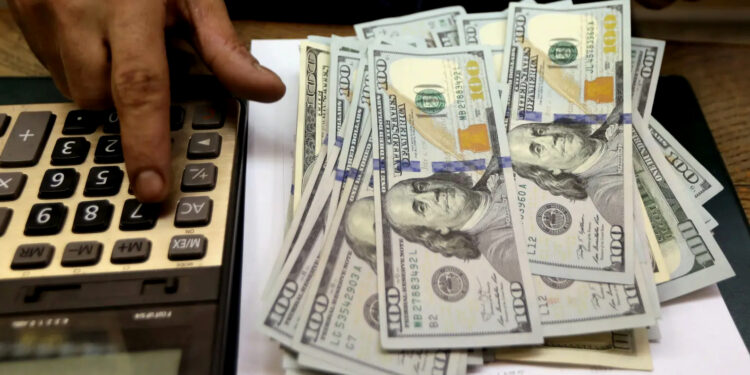By John Ikani
The dollar hovered near a three-month low on Thursday, marking its most significant monthly drop in a year. Investors increasingly believe the Federal Reserve won’t raise rates, anticipating a pivotal inflation report later in the day.
The dollar index, gauging the U.S. currency against six counterparts, inched down 0.058% to 102.74, close to Wednesday’s 102.46 – the lowest since August 10.
With a 3.7% dip in November, expectations rise that the Fed might cut rates in the first half of 2024.
Wednesday saw a partial dollar recovery post a report revealing faster-than-expected U.S. economic growth in Q3.
“I think it’s still pretty much all about U.S. yields. And by extension FOMC policy,” says Carol Kong, a currency strategist at Commonwealth Bank of Australia.
“Markets will continue to play to focus on what FOMC officials say about the prospect of the upcoming rate-hike cycle.”
Investor attention turns to comments from Fed Chair Jerome Powell, scheduled to speak on Friday, following Fed Governor Christopher Waller flagging a potential rate cut in the coming months.
Before that, all eyes are on Thursday’s pivotal Personal Consumption Expenditure (PCE) inflation report.
Christopher Wong, currency strategist at OCBC, notes the data’s importance in revealing whether the disinflation trend persists. “If core PCE undershoots expectations to the downside, then USD may extend the move lower again.”
Goldman Sachs observes U.S. financial conditions at their most relaxed since early September, easing by 100 basis points in a month.
U.S. rates futures markets now indicate over 100 basis points of rate cuts next year from May onward, with the two-year Treasury yield hitting its lowest since July, plummeting almost 40 basis points this week alone.
The dollar’s weakness benefits most Asian and regional currencies. Standouts are the New Zealand dollar and the Japanese yen, both thriving in the ‘carry’ spectrum.
The kiwi gained momentum on Wednesday after the central bank’s ‘hawkish hold,’ keeping the key cash rate at a high 5.50% but signalling a potential increase if inflation persists. It traded 0.26% higher at $0.6172.
Expectations of the Bank of Japan ending its negative rate policy lift the yen, reducing the need for direct FX market intervention. On Thursday, the yen strengthened 0.09% to 147.11 per dollar, maintaining proximity to Wednesday’s two-and-a-half-month high.
Sterling stood at $1.2695, up 0.01%, while the euro increased 0.06% to $1.0975. The Australian dollar rose 0.08% to $0.6623.




































